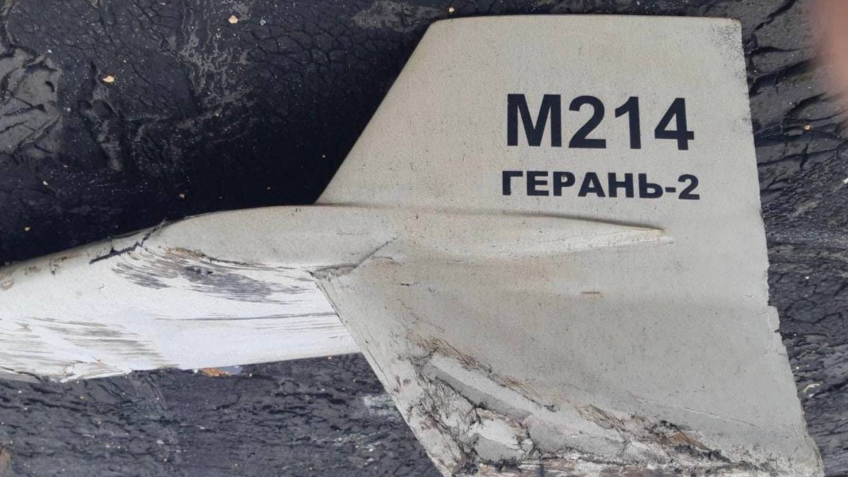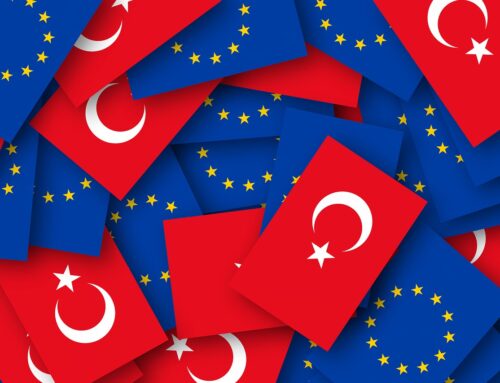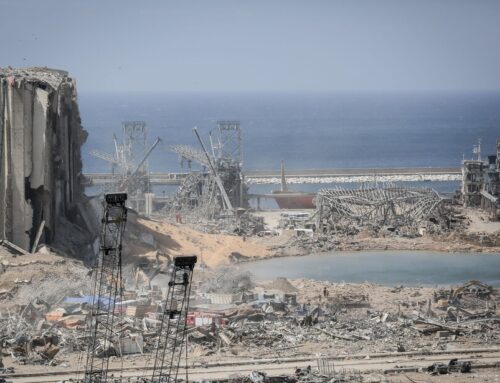PULASKI POLICY PAPER Iran’s actual and potential arms deliveries to Russia (Robert Czulda)
Autor foto: Domena publiczna



PULASKI POLICY PAPER Iran’s actual and potential arms deliveries to Russia (Robert Czulda)
Autor foto: Domena publiczna
Iran’s actual and potential arms deliveries to Russia
Autor: Robert Czulda
Opublikowano: 4 listopada, 2022
Pulaski Policy Paper no 24, November 04 2022
Press reports, circulating in October 2022, about the Russian use of weapons obtained from Iran were, on the one hand, perceived as a sensation and a surprise. There are good reasons for this – Iran has so far avoided getting involved in conflicts and disputes outside the Middle East, and its weapons have not been used in Europe before. Moreover, some observers were surprised that Russia – with a powerful (at least from a quantitative perspective) armed forces and an extensive arms industry, needed an assistance from a state, which has been under sanctions for over forty years and whose domestic military industry focuses primarily on satisfying the needs of own armed forces. Until now, the situation was the opposite – it was Russia that provided Iran with weapons and technological know-how.
On the other hand, reports of forthcoming deliveries of drones from Iran appeared as early as in July. Moreover, the arms transfer is a logical continuation of a relatively close political and military cooperation between Russia and the Islamic Republic (bilateral ties, forged in the 1990s, were strengthened after 2015, along with the intensification of cooperation in Syria, where their military forces began to coordinate their actions). Although in the Ukrainian-Russian War diplomatically Iran has been trying to pose as a non-aligned state calling for the end of a bloodshed, in reality Tehran has sided with Russia. Iranian president Raisi unequivocally expressed his support for Russia’s claims and blamed NATO, especially the United States for the outbreak of the armed conflict.
Current arms deliveries
The available information clearly shows that Iran supplied Russia with the Shahed-136 UAVs (Unmanned Aerial Vehicles) that have already been used in combat, including in the attack on the Ukrainian capital Kyiv. They were also used to strike civil infrastructure in at least 16 cities across Ukraine. Both Moscow and Tehran denied that any Iranian weapons were used in Ukraine, but available video evidence is unambiguous. These drones, locally known as Geran-2, do not – contrary to numerous media reports – belong to a category known as loitering munition (which can wait airborne around a target and wait for a proper moment to strike). They are either remotely controlled or most likely pre-programmed to attack ground-based targets. Hence, they can be compared to the German V-1 missiles from World War II rather than modern cruise missiles. They have a wingspan of 2.5 meters, while their weight is approximately 200 kg. They are armed with a 40-kg warhead and can fly at a cruise speed of 120 km/h. Although a warhead is relatively small, these drones can operate in groups, which increases their lethality.
Iran, which belongs to a relatively narrow groups of states with indigenous defence industry, has also delivered its Mohajer-6 armed drones. This type was revealed by the Iranian MODAFL (Ministry of Defence Armed Forces Logistics) in 2016 and – according to Tehran – its mass production was launched two years later. In 2021 they were displayed by the PMF (People’s Mobilisation Forces, Al Hashd Ash-Sha’bi), which is a large, state-sponsored, and pro-Iranian political and military organisation in Iraq. According to available sources, Mohajer-6 is 5.7 meters long and has a maximum speed of 200 km/h. It can be armed with light TV-guided bombs, known as Qaem, with a 1.7 kg warhead (they are also used by Iran’s Hamaseh tactical reconnaissance drones).
In late October 2022 the White House stated that the Iranian troops were “directly engaged on the ground” in Crimea supporting drone operations. Such reports seem true – all new equipment requires training, which means a direct presence of instructors, and support in terms of both logistics and operational use. A few days later it was reported that Iran enlists former Afghan security forces for deployment in the Russian military.
Earlier, in April 2022, the press – including “The Guardian” – reported that Russia had been receiving munitions and weapons, including anti-tank systems, from Iran via Iraq. The list included Iranian-made Bavar 373 air defence missile system and at least two Brazilian-designed Astros II ground—to-ground rocket launcher systems, which were reportedly handed over by the PMF and transferred first to Iran and then to Russia. The latter can fire rockets of various calibres (between 127 mm and 450 mm) and was sold by Brazil to Iraq in the 1980s. Some were built locally under license (known as Sajil-60).
Bavar 373 is an air defence, mobile, wheeled (8×8) system, which is similar to Russian S-300. One battery is composed of six launchers, one command-and-control unit, one engagement radar and one detect-track radar. The first variant was presented by Iran in 2011 and commissioned in 2019. It uses the Sayyad-4 missiles, which are most likely based on the Russian-made 48N6E missiles of the S-300 system. According to official Iranian information, the Bavar 373 can detect and neutralise up to six targets simultaneously (aircraft, helicopters, UAVs and even cruise missiles), regardless of weather conditions within a range between 5 and 200 km (or even 300 km according to some sources) and an altitude between 100 m and 27 km. Its export designation is AD-200. Such name was used during the International Exhibition of Naval Defence in Qatar in March 2022, when Iran presented a scale model of such system.
Main factors
Any assessment of both actual and potential Iranian arms transfer to Russia has to consider some major factors. First of all, this includes a legal factor, although it is not a decisive one – Iran has a rich track record of ignoring international rules and of illicit activities, including smuggling. Second factor is related to needs of the Russian military and actual offer of the Iranian defence industry, which is relatively limited. Thirdly, it has to be remembered that a production capacity of the Iranian military industry is also small. This includes a relatively modest industrial base, lack of new technologies and advanced materials, as well as insufficient funds.
Regarding a legal dimension, in October 2020 a decade-long United Nations’ arms embargo on Iran expired. That gave Iran a green light both to buy and sell military hardware. Back then President Hassan Rouhani openly said that Iran expected to sell more arms than it procured. Nevertheless, the United States, France and the United Kingdom now claim that transfers to Russia breach a Resolution 2231, which was unanimously adopted by the UN Security Council in 2015 (according to them, Iran is not allowed to export weaponry until October 2023). These three states have already called for a United Nations investigation. Their appeal was rejected by Iran.
In fact, it has to be honestly stated that our knowledge about all capabilities and products offered by the Iranian industry is very modest. Iranian military companies usually do not attend major international defence exhibitions. They also do not invite foreign journalists to see their products and facilities. Moreover, Iran has a very limited track record of arms export. Nevertheless, it is believed that Iran can produce various systems domestically as well as it is able, to some extent, to modernise and at least partially copy (by reverse engineering) even more advanced sub-components, such as engines, electronics and most likely also older types of avionics. It also has the capacity to produce about 50 types of ammunition and artillery shells, including tank ammunition and missiles of various calibres. Iran produces the majority of its own light weapons, including pistols, rifles, anti-tank weapons, mortars, anti-ship missiles, air-to-air and ground-to-ground missiles of different ranges.
Iran’s industrial portfolio – as presented below – is limited and in most cases does not include more complex weapon systems, such as aircraft (both fixed wing and helicopters), tanks and armoured vehicles. Iran’s industry is able, first of all, to overhaul its equipment. Its modernisation proposals clearly suggest that the capacity to design and then to manufacture new solutions is limited. For instance, the “new tank” Tiam, revealed in 2016 is a combination of a chassis from the M47 tank (a 1950s design) with the turret of an only slightly newer Chinese Type 59/69 tank. It is equipped with the M68 105-mm gun, which was fielded by the West in the late 1950s. The Owj engine, proudly revealed in 2016 as the “first indigenous turbojet engine”, is nothing more than a modified copy of the General Electric J85-GE-21 single-shaft turbojet engine, which was designed in the 1950s. Some systems (of Western origins from the Cold War) offered by Iran would not be attractive to the Kremlin. Moreover, Iran might be reluctant to share some of its most advanced technologies with Russia since it could pose a risk if they were later indirectly acquired by the United States; This would enable Iran’s enemies to counter them more effectively.
Regarding details of Iran’s industrial offer, Tehran has reportedly delivered to Syria communication systems, short-range multiple rocket launchers (the Type 63/Fajr-1 107-mm system), anti-tank missiles, recoilless rifles (copies of the M40 106-mm rifles), and sniper rifles (such as the Sayyad rifles produced in Iran without a license – a copy of the Austrian Steyr HS .50 BMG anti-materiel rifles). Iran has also delivered locally produced Safir 4×4 multipurpose light vehicles to Kataib Hezbollah, an Iran-backed Shia militia in Iraq. Iran reportedly has also exported to Syria the Bavar-373 and Khordad-3 air defence systems. According to some sources, Iranian ammunition has been found in at least nine African countries. Iran has sold Rakhsh (4×4) armoured personal carriers, Boragh vehicles, and an unspecified number of Ababil-3 and Mohajer UAVs to Sudan. Other weapons transferred to the region include light arms, such as G-3 rifles, rocket-propelled grenade (RPG) launchers, mortars (60-mm and 82-mm), rocket artillery, and landmines. Light arms and ammunition have also been delivered to Shia militias in Iraq and Syria, as well as to Lebanese militant group Hezbollah. Yemen’s Houthi rebels were supplied—most likely by Iran—with Qasef-1 suicide drones and light arms. Some of these items could be offered also to Russia.
Potential future transfers
Among military items that Russia could acquire from Iran are items such as personal gear, medical equipment, Safir tactical and Kaviran 3.4-ton tactical vehicles, Neynava all-terrain general purpose 4×4 military trucks, light arms, including mortars, the Shaher 14.5-mm anti-materiel sniper rifle, and machineguns, like a modified 12.7×108-mm DshK. The list also includes ammunition of various calibers, including for light arms. Iranian industry could offer an unspecified quantity of artillery shells for both towed and self-propelled guns (122 mm and 152 mm).
The Iranian defence industry could also offer services, such as maintenance, repairs, and some spare parts (for instance, for the T-72 tanks and the BMP-family armoured infantry tracked vehicles). In the past Iran was involved in some helicopter overhauls in Zimbabwe and planned to open a centre for maintenance, repair, and overhaul of helicopters in that country. However, also in this case details are unknown. However, a potential obstacle is that Iran has no land connection with Russia, which makes such cooperation very problematic.
Other potential transfer could cover some anti-tank systems, both guided missiles (ATGMs) and RPGs. For instance, in the past Hezbollah was equipped by Iran with the BGM-71/Toophan and 9M113 Kornet/Dehlavie anti-tank guided missiles. Iran might be also able to offer the RPG-29, which has been used in Iraq and in Lebanon, or the Misagh system, which is a local version of the Chinese QW-1 man-portable air-defence system (MANPADS). The latter has been transferred to Shia militias in Iraq and most likely to militias in Syria.
It is very likely that Iran could supply Russia with its multiple-rocket artillery systems (MLRS), such as the Fajr, which has already been seen in various locations across the Middle East. Fajr-3 (240-mm), Fajr-5 (333-mm), Falaq-1 (240-mm) and Falaq-2 (333-mm) have been delivered to Hezbollah and Syria (Falaq rockets have also been spotted in Sudan). One of its variants, Fajr 5C (333 mm), was used to attack the headquarters & training camp of Kurdistan Freedom Party (PAK) near Erbil in Iraq in September 2022.
Iran could also offer its radar technologies. In recent years Iran unveiled numerous types of radars, but their parameters for obvious reasons cannot be verified. One of such development was announced in 2015, when Tehran unveiled the Ghadir phased-array radar, which is – according to official statements – designed to detect aircraft at 600 km and a ballistic missile at 1,100 km. However, it is highly doubtful whether Iran has sufficient knowledge and technological capacity in fields such as electronics to design and manufacture advanced radars, capable of detecting and tracking not only advanced fighter jets but also ballistic and cruise missiles. Iran’s capacity to produce radars in large quantities is also doubtful.
Additional deliveries of drones are the most plausible scenario. Russia is interested in UAVs with combat (strike) capabilities. Future deals could cover the Arash-2 system. In September 2022 Iran allegedly refused a request by President Vladimir Putin to deliver them, but in late October it was reported by various sources – including by Ukraine’s General Staff – that the Kremlin was finally allowed to acquire them, and that Iran was already training Russian operators. Arash-2, also known as Ki’an-2, is believed to be used for strike operations, but without a loiter capability. It has a widespan of approximately 4 meters. Its range is believed to be roughly 1,000 km but can be even longer. It cannot be confirmed, but some sources claim that Arash-2 can be equipped with a passive homing radar and might be used to neutralise radar stations.
Iran has also other strike-capable drones, such as the Qasef 1 and Qasef 2 loitering munition systems (based on the Ababil-2 UAV) with a 30-kg warhead. These have been used by Yemeni Houthis to attack radar systems of the Patriot air defence. Another system is a recently revealed Meraj-521 tube-launched loitering munition (which looks very similar to US-made Switchblade 300 QPS-equipped tactical drones). Ababil-3, which debuted in 2010, can be used both for aerial recoinnesanse and combat duties – for the latter it can be armed with Qaem bombs (a new variant is known as Atlas). They have already been used outside Iran, including in Syria. It has a landing gear and uses airways to take off and land. Kaman-12 UAV can carry a payload of up to 100 kg. Other interesting projects of multirole UAVs (including for combat duties) are named Raad, Nazir and Karrar, as well as Hazem with “bombing capability”.
Another category of weapons that Russia is the most likely to be interested in are ballistic missiles. Tehran now has the largest and the most diverse ballistic missile forces in the Middle East. Iran’s capabilities include both short and medium-range missiles. Potential transfers to Russia could include the Fateh-110 and the Zulfaqar-family missiles. The attractiveness of Iranian missiles is increased by the fact that they have been used several times and have proved their usefulness. Fateh-110 is a mobile (on a wheeled platform) single-stage surface-to-surface missile, which was test-fired in 2012 (the first generation of this class was presented for the first time in 2001). It has a range of 300-500 km.
In February this year Iran unveiled an improved version of the Fateh-110 missile. New system, known as Kheibar Shekan, has a declared range of 1,450 km, while a previous variant – Dezful (presented in February 2019) has a claimed range of 1,000 km. The Zolfaqar missile is believed to be based on the Fateh-110 class and has a declared range of 700 km. This missile was used to strike Jihadi forces in the Deir ez-Zor Governorate in 2017.
Conclusions
- Iran is the most likely and reliable partner Russia can have in current circumstances. Both states have close political and political cooperation. However, it should be remembered that Russia and Iran are not allies, but rather tactical partners (“marriage of convenience”). Economically – including energy – they are competitors.
- Iran’s arms deliveries to Russia may be considered surprising – in the past, Russia was the supplier of arms to Iran and Russian industrial capacity is much higher – but they are logical from the point of view of Iranian interests. Thanks to these deliveries, Tehran will receive some benefits, probably including supplies of Russian weapons (most likely aircraft). The authorities in Tehran should not be expected to officially confirm their materiel support for the Russians.
- Capacity of Iran’s arms industry is largely unknown, but it is very plausible that it faces serious problems (lack of funds and technologies, small industrial base). This means that large (mass) shipments of weapons from Iran to Russia are unlikely. Combat drones might be an exception, since these are rather technologically simple systems.
- Legal restrictions – currently raised by the United States, the United Kingdom and France – do not and will not be an obstacle to possible further arms deliveries.
- Large shipments of heavy weaponry, such as tanks or armorer vehicles, might be difficult do to an absence of a border connection between Russia and Iran. Using transit routes through Kazakhstan and Turkmenistan would be a political challenge. Shipments would have to be carried out through the Caspian Sea, where Russian Caspian Fleet in Astrakhan is located. It has some transport capabilities.
- Items the Iranian defence industry offers are from time to time impressive, but in general they do not meet criteria of a modern warfare. However, this does not constitute an obstacle for Russia, whose armed forces are of a low technical level.
- The most likely transfers of weapons from Iran to Russia include tools that Russia lacks. These are mainly ammunition, including tank and mainly artillery, but also combat drones and ballistic missiles. The latter are a substitute for conventional air forces and would allow Russia to continue its terror campaign against Ukraine without having to operate on its territory. Moreover, countering ballistic missiles remains difficult and costly, which further increases the attractiveness of such systems.
- Further deliveries of Iran’s drones and ballistic missiles will increase Russian destructive capabilities. They will allow Russia to escalate its attacks on Ukrainian civilian and energy infrastructure in order to degrade Ukraine’s industrial base and to terrorise its population.
Author: Dr Robert Czulda, Reaserch Fellow of the International Security Programme at the Casimir Pulaski Foundation
The Paper was prepared in cooperation with International Centre for Ukrainian Victory






